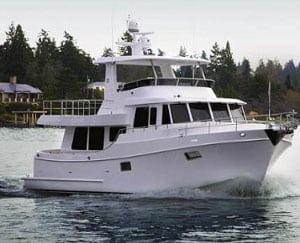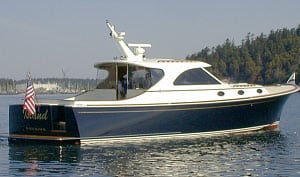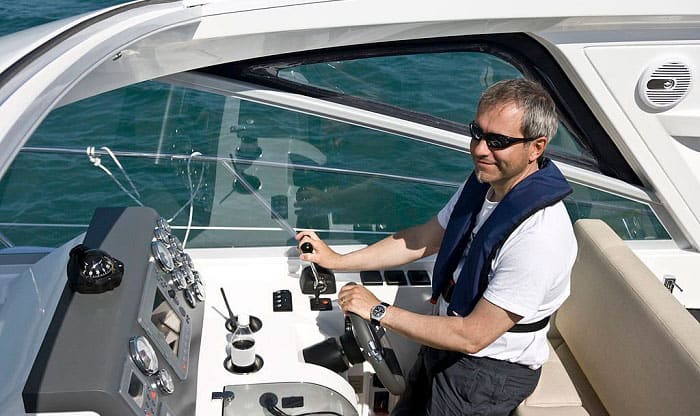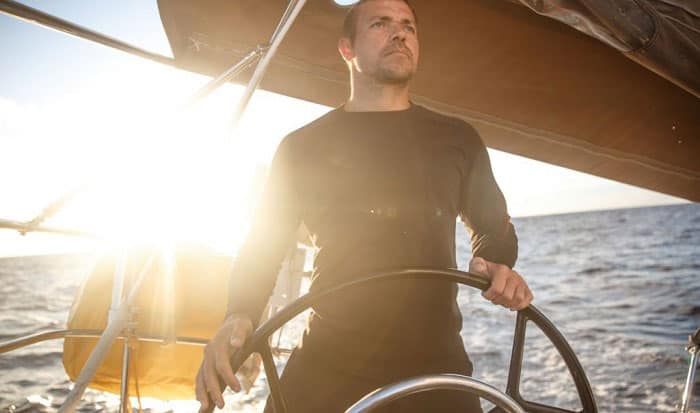What is the helm of a boat? The word helm refers to wherever the vessel is steered or commanded from; you can usually see a wheel or tiller at this section.
As long as you keep this definition in mind, it’s easy to understand what someone means when they say “take the helm.” To know more about this part of the boat and other related terms, keep on reading this article.
Table of Contents
What is the Boat Helm?
What is the boat steering wheel called? The answer is the helm. However, you may be unsure about the latter term’s meaning, since search engines often show a lot of photos for it, such as what you see on a pirate ship or the tiller on sailboats.
So, what is the helm position definition?
Even though the helm may look different among different types of boat, a boat terminology diagram will reveal the term refers to the vessel’s steering location, such as a steering wheel on a ship or a lever connected to a rudder.
But there’s more to a boat steering helm.
The word helm actually originates from an old English term meaning ‘rudder.’ Recreational boat operators sometimes let their passengers take the helm during a cruise to have a feel of what it’s like to ride a boat.
Features of a Boat Helm
If you’re seeking a boat helm for your vessel, consider the factors below.
- Level of visibility: You’d want a helm that allows you to see as much as possible, ideally 360 degrees. A good helm provides you with a reliable line of sight from both the front and the sides, helping avoid any potential collision with other vessels.
- Navigation controls: The instrument layout should be visible and accessible to the operator in the most convenient way. A minor inconvenience when reaching for an instrument when helming doesn’t only cause annoyance but also leads to fatal accidents.
- Ergonomics: Besides functionality, a good helm should also come with comfort. Your butt will start to hurt if seated for long hours in one place; for that reason, a helm chair with a foot platform and armrests would be much better to have compared with regular bench seats.
- Ventilation: Another factor contributing to a quality helm sailboat is the ventilation system. Some vessels have built-in vents in the dash to keep the skipper either cool or warm enough.
- Deck access: A helm with sufficient deck access will allow the crew to get from one place to another at ease; it should also let the skipper control the boat more easily.
- Charts: Oftentimes, the boat operator has to carry a collection of paper charts in case there is a power cut. These charts will have information about sea routes and dangers that sailors must know about.
There ought to be a drawer to keep these chartbooks – a wide enough, flat, non-slip surface is also recommended to lay down the papers.
Different Helm Designs
Ocean Alexander 60
The Ocean Alexander 60 is different from other yachts, with a set of steps leading directly to the flybridge and doors leading to the side decks.
What is more, the twin-screen navigation aids in ultimate control over the key power hydraulic bow and stern twister. The flat stowage underneath the spacious chart table truly makes this yacht a worthy investment.
Fountaine Pajot Elba 45
The Fountaine Pajot Elba 45 is said to be the best buy of the catamaran segment, and here’s why.
A huge improvement was made with the console, which was placed at an angle, so it’s much easier to control even when you’re wearing sunglasses.
Even though the accommodation for electronics is quite limited compared with other designs mentioned, the helm still provides ultimate convenience for the boat operator.
San Juan 48
The San Juan 48 is a true Downeast-style boat with the helm fully enclosed by glass. The siding glass windows can be taken out easily to make an open-aired boat. The yacht helm also has wide enough space for a nice, large Garmin display, networked with fish finders, radars, and plenty of other electronics.
Offshore 64
The comfortable seats on the Offshore 64 are just an arm’s reach away from the steering wheel and navigation equipment.
Featuring a big instrument panel, the helm also comes with 3 19-inch daylight glass multi-function displays that tie the whole navigation system together – truly an exquisite presentation.
Helming a Boat
Helming the boat refers to riding it. And though the task can be mind-boggling at first, helming a boat can be a lot of fun once you get the hang of it.
First, it is important that you know the guidelines below by heart.
- Pay attention to the heel angle. It should be between 10 and 30 degrees.
- Know the wind direction and wind speed. The former helps you trim your sails, while the latter helps you avoid big waves that may cause capsizing.
- Use apparent wind to travel faster.
- The bow of a boat changes direction as the point of sail changes. It’s a must to know these points of sail before skippering.
- Keep track of other vessels around you and learn when to give way.
Once you understand how to make these considerations while conscious of your senses, you will know what is going on offshore and when to change the direction of your vessel.
And that’s how you hull a boat!
FAQs
Where Is A Helm On A Boat?
A helm on a boat is usually located in the center or ⅔ forward to keep the rig in sight when navigating, which explains why you hear the front of a boat called a helm sometimes.
This steering apparatus is often between the bow and stern of a boat, and at the right side of the vessel as well, presumably to accommodate right-handed people or most of the population.
Who Is At The Helm Of A Boat?
The person at the helm of a ship is usually the person in charge of that boat, a.k.a the boat operator. When you’re out in the sea, you will see this person steer the boat using a helm, which is usually a wheel or a tiller.
Is The Helm Part Of A Ship?
A helm is a part of a ship since it is right on the vessel, usually at the center or ⅔ forward. If you still wonder, the helm is what onboard a boat, it is essentially a workplace for the captain to control the vessel.
Conclusion
By now, you should know the answer to the question we raised at the beginning of this article: what is the helm of a boat.
The helm needs to be ergonomic and conveniently optimized for a safe ride in the sea. It may take some time to get used to helming a boat, but once you get the feel of the waves and wind directions, operating a vessel will be as easy as pie.
Happy sailing!

Ten years of enjoying countless trips on boats never made me love them any less! So I am here to put all those experiences into good use for other boaters who want to have a safe and fun trip with their friends and families.






